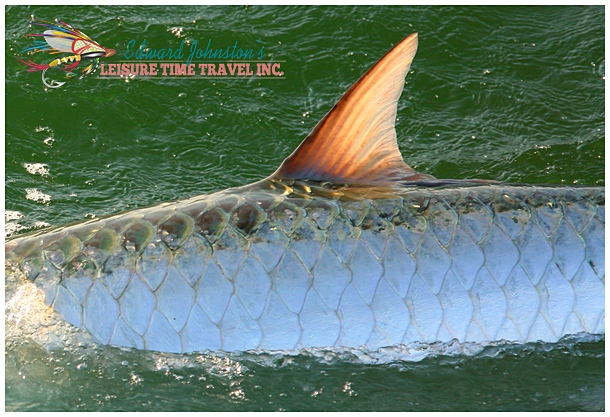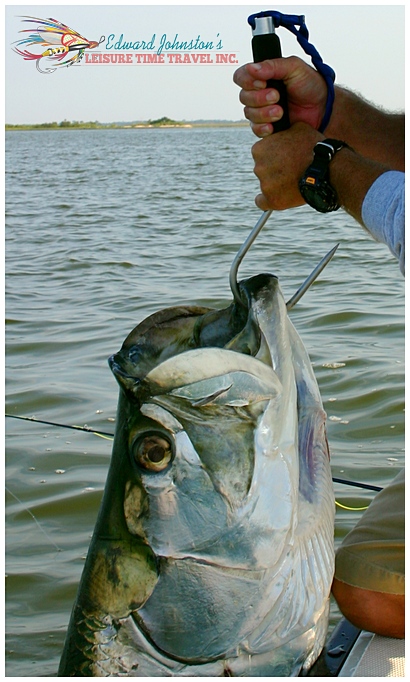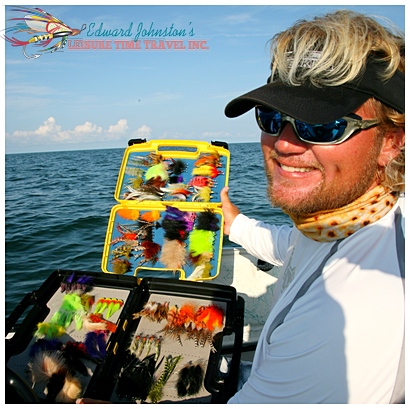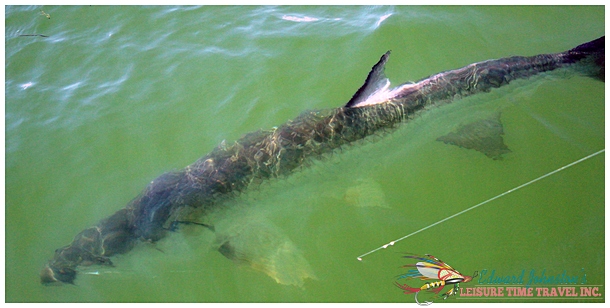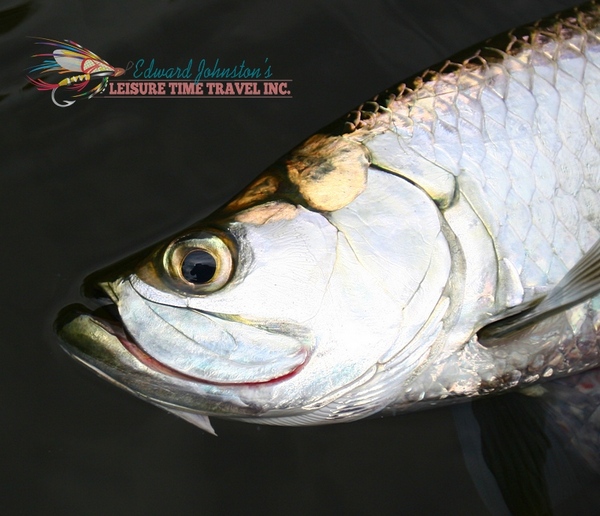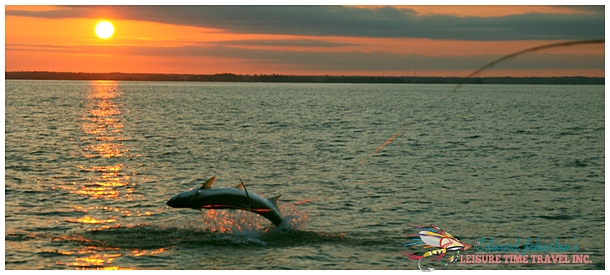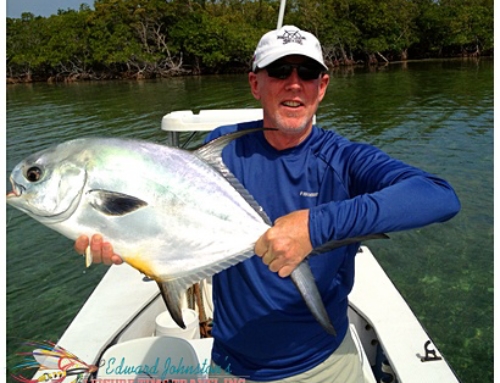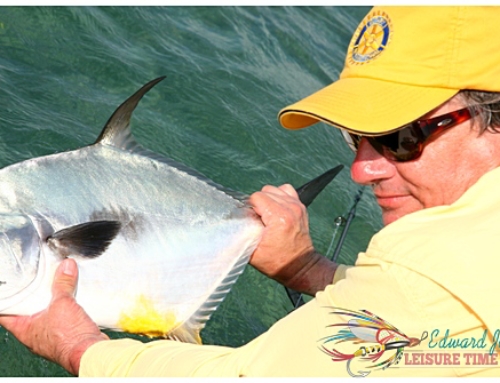Giant Tarpon Fishing – Crystal River, Chassahowitzka River and the Homosassa River
If you are interested in Giant Tarpon fishing the areas around Crystal River, Chassahowitzka River and the Homosassa River, located on the west coast of Florida (also known as Florida’s Nature Coast), read on!
***
Where the Gulf of Mexico and the land along the central west coast of Florida converge, you will find the world renowned giant tarpon fishery, the twelve-pound, sixteen-pound and twenty-pound fly IGFA fishing records are currently held from this beautiful area of Florida. In fact, over the years, all of the major giant tarpon fly fishing records have been caught off of Florida’s central west coast in the Homosassa river area.
To be more specific, the three current record giant tarpon mentioned above were caught in an area between the Chassahowitzka River, which is just south of the Homosassa River and Pine Island which is adjacent to the Weeki Wachee River. This fairly large flats-fishing area is known for its light colored bottom often referred to as “Oklahoma” by the guides and knowledgeable anglers. The pale sandy (and rocky) bottom offers an advantage for sight fishing as the tarpon are easier to see versus fishing over a darker sea grass bottom found from the Homosassa River north to the Crystal River.
The Story: A Tarpon Odyssey
There are many beautiful rivers in Florida, but none give me the joy of the Homosassa River. Cool spring water provides a seemingly endless supply of fresh water from the Crystal, Homosassa, Chassahowitzka River, and their tributaries. As those rivers snake their way toward to Gulf of Mexico the water begins to turn brackish. Within a few miles, the subtropical landscape gives way to meadows of saw grass. The saw grass gradually transforms to black needle grass and then to mangrove islands tight with brush. Beyond is the shallow beginning of the Gulf of Mexico where limestone bedrock reaches for the surfaces in the form of invisible obstacles. All that talk about the treacherous waters here is no joke. For the unwary, the gulf waters take no prisoners.
The coastal marshes that surround Homosassa are nature’s high production factories in terms of fertility. The coastal marshes gain their extraordinary productivity from the abundance of nutrients delivered by the abundant fresh water rivers and the tide, which disperses the nutrients over the broad shallow flats. Where there is food there are fish.
After a brief run out to the fishing grounds, the engine is quieted. The 12 weight Sage fly rod coupled with a Hatch Tarpon reel is slowly removed from under the gunnel. The Rio fly line lays coiled upon the deck ready for action. The search begins. Arms are flexed and the push pole bends, silently propelling the skiff in search of the elusive tarpon.
Three brown pelicans sweep low alongside our skiff. They beat three long stokes upwards in unison. Once, twice, now gone. Left behind is the low sound of the gentle clear warm water quietly lapping against the hull. Eyes strain in the first light for something which to focus upon. A tarpon breaks the surface and disappears into concentric rings. Another fish rolls further out. You can see the passing pod’s silhouette through the translucent water of the Homosassa River.
The fly begins its graceful journey as the line unrolls in tight loops along a perfect plane then shoots briskly through the guides. The fly sinks deep. A short hard tug on the fly line and the rods bends. The feeling is unmistakable. A moment later the water erupts in an explosion. The air is full of fish. The rod bends deeply with a great heaviness on the end. The line shears through the water and sounds like a ripping bed sheet. The fly reel spins wildly. A tarpon is on.
After three majestic jumps, the fish sounds with surging energy and charges off like a locomotive. Fly line is surrendered and retaken. The tarpon breaks the surface for a gulp of air and then submerges with liquid fury. The rod bends and recovers. The tarpon twist and turns as she tries to get away from the mysterious power holding her.
The battle is over in twenty minutes. The magnificent fish is eased to the side of the boat to be admired. The silver sides of the tarpon seem to drain back into the Gulf. Her fins seem almost transparent. That huge eye stares in wonderment. After pausing for a brief moment, she is gone to be reclaimed by the gulf. Only her memory remains.
Clearly, this is the best time of the year to be here. Fish are everywhere in the Homosassa River and the finest tarpon fishing in the United States is here in my own backyard.
The suns brightness and burns a hole in the sky. The Homosassa River is as clear and flat as a windowpane and shimmers in the sun. You can see right to the bottom and watch the turtle grass sway in the current. Seagulls lift in the easy breeze and call to one another. The man-a war birds are riding the thermals skyward. Inland the cumulus clouds are piling up. Sounds of distant thunder bolts echo in the background, as dramatic changes of light emanate from the ever changing sky and sea.
It is times like this that you wonder just what you have done right in your life to deserve such a gift.
Fishing for Tarpon:
Migratory fish begin to show from the middle to late April and their numbers will increase in May through June. The fishery is weather dependent, so if it a bit cool, the tarpon arrival will be delayed. The current tarpon season was delayed due to the unseasonable cool weather which Florida, Bahamas and the Northern Caribbean have experienced this year.
For the average angler, the most common way to find tarpon is to look for rollers. Tarpon have a primitive lung and frequently come to the surface to take a breath of air. After they drop back down, they will usually let off some bubbles which you may see on a calm day. Another tip off is nervous water which is caused by the movement of fish below the surface.
If you really want to catch a tarpon, you may consider hiring a guide. This is their business and the top guides perform their vocation very well.
The Gear for Catching Tarpon:
We all enjoy a fun day fishing, and there is probably nothing as exciting as catching a tarpon on light tackle. And to make the joy complete the contest is almost always at close quarters. The first time a 100-pound tarpon silver rocket goes off 20 feet from you, you’ll know what brought you to tarpon fishing. No fly fisherman ever forgets the first time he hooks a large tarpon. Small tarpon, 25 pounds or less, certainly make an impression. But, the really big tarpon, especially those more than 100 pounds, really do something to your mind.
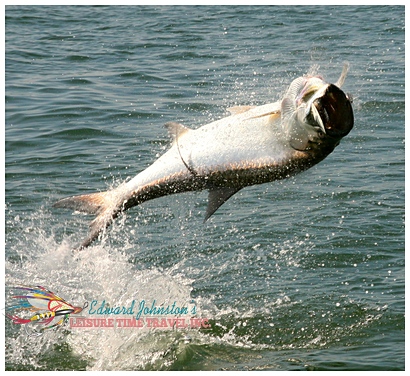 The most important factor in fly fishing for a tarpon is adequate tackle. You see a lot of guys fooling around with light tackle, showing off, trying to set records. Those guys really don’t impress me. With the right tackle you won’t lose as many fish and you can make the fight shorter for those you do catch. You need a good sturdy 11wt or 12wt fly rod, such as a Sage One and a quality reel, such as a Hatch 11 Plus, capable of holding at least 250 yards of 30# backing. Add in a RIO Tarpon Fly Line which has front taper designed to cast large flies and you will have a first-class tarpon rig.
The most important factor in fly fishing for a tarpon is adequate tackle. You see a lot of guys fooling around with light tackle, showing off, trying to set records. Those guys really don’t impress me. With the right tackle you won’t lose as many fish and you can make the fight shorter for those you do catch. You need a good sturdy 11wt or 12wt fly rod, such as a Sage One and a quality reel, such as a Hatch 11 Plus, capable of holding at least 250 yards of 30# backing. Add in a RIO Tarpon Fly Line which has front taper designed to cast large flies and you will have a first-class tarpon rig.
You don’t have to spend a fortune on a good tarpon rig, although the better you become at casting, the more you will want to spend.
Your drag should be set at 20% of your line strength. So, if you are using a 20 lb. class tippet, you drag setting should be set at 4 lbs. straight off the reel. A small scale is very handy for setting the drag. If the fish gets more than two hundred feet away, back off the drag a bit, the smaller the arbor/line diameter the greater the drag.
I have had anglers balk at this, but it works. It is very difficult to break 20 lb. test line with an 80 lb. test bite tippet on an average Homosassa fish, which arguably average sixty to a hundred pounds. Occasionally a tarpon will swallow the fly with only the class tippet in its mouth for which you will certainly lose as their coarse abrasive lips are like a file and will quickly cut the line.
If you have little drag set on your reel and the tarpon strikes, you will be into your backing in seconds. Then what are you going to do? Well, probably chase the fish and start a long dragged-out fight.
Personally, I only use 20 lb. test line. I have, or anglers in my skiff have caught hundreds and hundreds of tarpon. Again, for most tarpon it’s very difficult to break 20 lb. test line. Most of the time when we get a tarpon close to the boat we just take a fillet knife, strike the tippet and let the fish go on its way.
The really big world-record tarpon, which are few and far between, are treated differently as they can easily break light weight tippets, but unless you are chasing a record, don’t worry about it.
People who brag about two and three hour fights have seen too many reruns of The Old Man and the Sea. It may be noble but it isn’t sport. What do you accomplish by playing tug-of-war with a tarpon. Well, if the sharks don’t kill and eat the tarpon, the lactic acid build up within the fish might! All you have done at this point is kill a great game fish that no other angler will get pleasure from again. The tarpon won’t like it either. All the romance of tarpon fishing exists in the mind of the angler and is in no way shared by the fish.
With some knowledge about tackle and fighting fish we can keep the trauma to the fish at a minimum. And don’t forget, the larger female fish are laden with millions of eggs of which only a few will reach maturity. Tarpon are a precious resource and we need your help to preserve them.
The Techniques for Catching Tarpon:
The best angle to cast to a tarpon is across their path of travel. Head shots are the tough, but when you have a opportunity, you take whatever you can get. Time permitting, a great tarpon guide will anticipate the movement of the fish and line you up for the best presentation.
When fishing a string of tarpon, if you have the time aim for the second or third fish in the column. If the second or third spook, the rest of the school may not follow, if the lead fish spooks, there is a good chance the of the school will follow.
When fishing a daisy-chain of tarpon, you cast to the outside edge of the fish coming towards you. Cast in the middle and there a good chance you will spook the fish. If you are content, consider just watching the fish rotate in the circle which is an amazing act of nature. The experts can only surmise why tarpon daisy-chain; is it a pre-spawning dance or mating ritual? Only the tarpon know!
When stripping in the line have the rod low and pointed directly at the fish. Sometimes you can slap them beside the head with a fly and they won’t eat it, other times it’s like rolling a wine bottle across a jail cell floor!
When a tarpon hits the fly, expect him to strike hard. Set the hook with a strip strike. The tarpon pinches down hard on the shock tippet so strike the fish several times. Never strike a tarpon by rising the tip of the rod as you will pull the fly out of the strike zone if the fish misses the fly.
As the fish takes off with the fly, sweep the rod in the opposite direction from the way the fish turns, with pressure on the bottom of the rod. As the fight continues make sure, you are holding the fly line tight so the fish does not come off the fly and be aware of your fly line as the fish strips it away.
The fly line comes through the guides very fast and can easily foul. After the hook is in, clear the line to the reel and get ready to go at it again.
Now comes the part where that carefully sharpened hook pays dividends. When the tarpon jumps be prepared to give the line controlled slack. The jump is usually the time a tarpon will throw the hook, so this is the most critical time. When the tarpon comes out of the water, all the weight of the fish stretches the line to the max as the fish moves away from you. Usually the hook is not embedded deep enough in the tarpon’s mouth to remain there while the tarpon is thrashing back and forth. You can compensate for this by bowing to the fish, but, remember to keep some tension on the line.
Applying constant pressure on the tarpon will get the job done with a minimum of time and with maximum efficiency.
You want to apply as much pressure on the tarpon as you can without breaking the leader. Keep your rod tip low, always opposite the direction the fish is heading. Then with the bottom of the rod, use short pumps, recovering line each time. When the fish gets close to the boat, they will frequently try to get to the surface to gulp in oxygen. You can prevent this and shorten the fight by placing your rod down low, even into the water. This technique can shorten the fight considerably.
Just remember, land your quarry quickly and don’t play the fish to exhaustion. A tarpon is too valuable a resource to be caught only once (this goes for all fish). If the fish goes left, you go right; if the fish goes right, you go left; if the fish jumps, bow to it, if the fish comes to you, pull back. With the fish at boat side, cut the leader close to the mouth for a quick release. With adequate tackle and the proper drag setting you should have most fish boat side in less than 20 minutes.
Hooking a large fish is a tremendous rush. Everyone should experience the enormous strength of these fish at least once in their lives. But, killing a fish for no other reason than personal enjoyment runs counter to the very conservation ethic that defines our sport.
Catch and release: Good techniques to help reduce fish mortality:
1. Land the fish as quickly and efficiently as possible; the longer the fight the greater the stress on the fish.
2. Avoid removing the fish from the water.
3. To photograph a fish have someone ready with a camera and do it quickly. Keep the fish in the water if possible.
4. Use barbless hooks or pinch the barbs down. They are not only easier to remove from the fish they are also easier to remove from your fishing partners!
Tricks of the Trade:
Clothing: Clothing for fishing should be selected from two viewpoints- comfort for the angler, and invisibility to the fish.
Knots: Arguably, the six most important knots involved in flats fishing are the Bimini twist, nail knot, blood knot, and the Uni knot (or uni loop) which ties your flies to the tippet.
For tarpon leaders, you need to connect two lines of unequal diameter. The Huffnagle and Albright knots are old standards. The Slim Beauty is my knot of choice.
Also, I like use a snell knot to tie my tarpon flies to the bite tippet. Some anglers use a loop such as the perfection loop.
The place to learn and perfect your knots is at home, not on the flats while you are trying to catch fish!
Fly lines: Make sure your lines are cleaned before you go on the trip and every day or so while you are fishing. Dirty fly lines drag through the guides and reduce the distance of your cast. There are several good fly line cleaners on the market which you should have. If you have not purchased a new line in a while this may be a good time to do it.
We like the Rio fly lines. You will need several lines to cover all the tarpon fishing conditions. For laid-up floating tarpon or tarpon high in the water column, obviously you need a floating line. A clear sink tip line or clear sinking line is best when the fish are deeper in the water column. I even keep a lead core line ready, as at least once a year you may find the tarpon hugging the bottom in deeper water, and a fast sinking line is the only way you going to get your fly down there.
Always stretch the line and leader before fishing.The line’s memory retains coils from being stored on the reel which is much harder to cast unless you straighten the line out.
A little trick I have learned is to mark the sweet spot on the fly line which will help you judge when you have the right amount of shooting line available. You can do this with a marking pen or just tie a nail knot at the proper location.
Leaders: After catching any fish always recheck your knots, and check the leader for frays. An easy way to straighten a leader is stretch the line an rub your fingers up and down the line until the friction heats the line and straightens it.
Hooks: You are spending a good deal of money on the trip and tackle, so don’t chinch on hooks. Get the best hooks you can for your flies. A carefully sharpened hook pays dividends (especially with tarpon). I like a ceramic sharpening stone and I keep one ready on the boat for easy access. Triangulating the point works best. The Owner Cutting Point and Eagle Claw Diamond Point hooks need no sharpening (at least initially).
Tackle: Make sure your have cleaned and lubricated your reels. Check those guides. Ceramic rod guides that crack or chip have rough edges which can damage a fly line.
Keep in mind that 3 or 4 piece rods are much more convenient than 2 piece rods and can be carried with you on commercial flights, thus alleviating any worries about lost or damaged rods. There is no doubt that travel rods are easier to carry on the plane and in the boat.
You’re Guide: The most important person in determining your fishing success (besides yourself) is your guide. Listen to him and try his methods first. If his method’s fail you might try some of your own. Remember: He lives in the area and his advice should not be ignored! Establish a rapport and communicate throughout the day. Try and stay upbeat even when the fishing is slow, he will try harder.
You: You are spending a good sum of money and valuable time to go fishing, hopefully to have a good time and enjoy yourself. You need to be over-prepared.We have seen people go fishing with all the best intentions, but end up angry at themselves, the guide, and sometimes other people because they did not spend any time preparing for the occasion.
First: If you are fly-fishing you need to practice, practice, and practice. You need to practice not only for your timing but also too built up your casting muscles. There is usually a breeze and you will seldom get a perfect downwind cast, especially for tarpon. Practice casting into and across the wind! If there is snow on the ground where you are located, find a gym or warehouse.
Second: Have all you equipment organized and ready to go well before the excursion. Make sure you have back up rods, reels, and fly lines.
Third: Make sure you have plenty of flies. Don’t worry about having too many flies. You can always use them again or somewhere else. You should have plenty of pre-tied leaders or material to make leaders.
Fifth: Have realistic expectations. Factor in the weather and other circumstances beyond your control. The angler rarely gets perfect weather for the entire trip. I tell my clients if you get more than three good days of fishing out of six this time of the year you are lucky
Sixth: Have Fun
Seventh: If you have any questions about tarpon fishing at Homosassa or information about any other Caribbean destination just call Edward R. Johnston. It’s easy, just dial 800-771-2202. We will be happy to help!
A note since this article was written: Effective June 12, 2013 – FWC UNANIMOUSLY VOTES TO MAKE BONEFISH AND TARPON CATCH AND RELEASE IN FLORIDA! The new rule not only protects tarpon in Florida waters, but extends catch and
release regulations into federal waters off of Florida.
The newly adopted regulations include the following provisions:
· Eliminating all harvest of tarpon with the exception of the harvest or possession of a single tarpon when in pursuit of an IGFA record and in conjunction with a tarpon tag.
· Keeping the tarpon tag price at $50 per tag but limiting them to one tag per person, per year.
· Modifying the tarpon tag program, including reporting requirements and shifting the start and end date for when the tarpon tag is valid.
· Requiring that tarpon remain in the water and are released near the site of capture.
· Discontinuing the bonefish tournament exemption permit that allows tournament anglers to temporarily possess bonefish for transport to a tournament scale (this brings the state in line with similar rules in the National Parks in the Keys).
Read more at Bonefish and Tarpon Trust and the Florida Fish and Wildlife Conservation Commission
A partial list of Homosassa Guides
Captain Dan Clymer Withlacoochee River * Crystal River * Homosassa River * Chassahowitzka River
You can call Dan at 352-418-2160
Capt. Jim Farrior Crystal River * Homosassa River * Chassahowitzka River * Weeki Wachee River
You can call Jim Farrior at 352-621-3190 or 352-422-1992
Captain Jim Long Withlacoochee River * Crystal River * Homosassa River * Chassahowitzka River * Weeki Wachee River
Call Jim Long at 352-422-1303
Captain Steve Kilpatrick Withlacoochee River * Crystal River * Homosassa River * Chassahowitzka River * Weeki Wachee River
Captain John Bazo Crystal River * Homosassa River * Chassahowitzka River * Weeki Wachee River
Call John Bazo at 352-895-7811 or email at J[email protected]
Captain Rick Lefiles Withlacoochee River * Crystal River * Homosassa River
Call Rick Lefiles at 352-400-0133
***
Fly Fishing for Tarpon in the Yucatan
Finally; if you cannot work in a May or June Homosassa River tarpon Trip, consider the Yucatan. The season in the Yucatan is all summer long. Granted, you will not find the huge tarpon found around the Homosassa River, but you will find plenty of the smaller (fun) sized fish.
Your writer, Edward Johnston has visited the Yucatan thirty times in the past twenty-two years and he knows where to find the fish!
Leisure Time Travel – Your best and most knowledgeable choice for fishing the Caribbean
531 N. Citrus Ave. Crystal River, Florida 34428
352-795-FISH (3474)
1-800-771-2202

